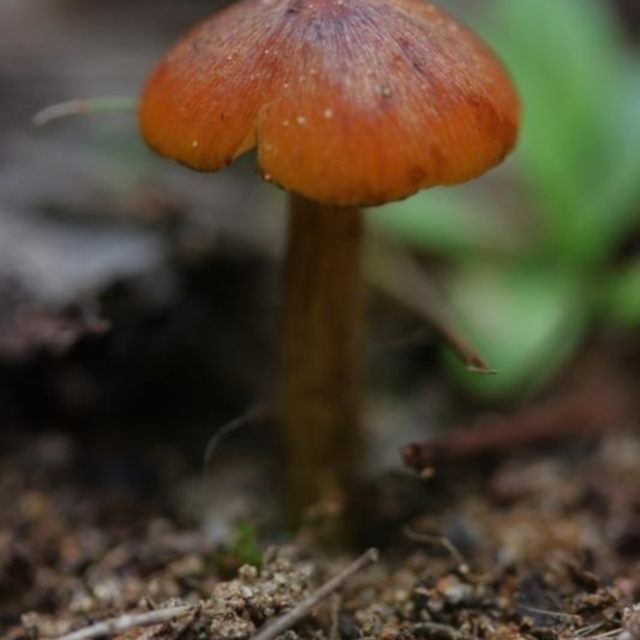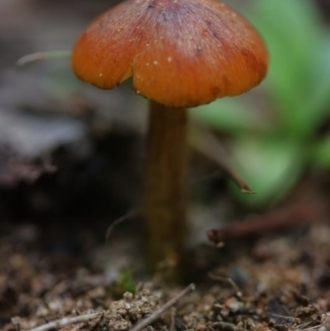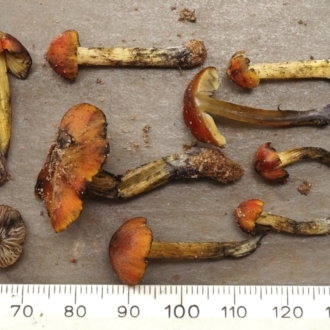Hygrocybe conica
The fruitbody is a mushroom with a cap atop a central stem. The cap may be up to 5 centimetres in diameter, is initially conical but becomes shallower as it expands and may be somewhat viscid, but rapidly becomes dry. It shows shades of yellow to orange-red and is more-or-less smooth but a closer look shows it to have radially aligned fibrils that are tightly pressed against the surface. The gills are yellow to yellowish-orange. The stem may reach 5 centimetres in length and is yellow (perhaps with orange tints). The fruitbody bruises black quite easily - and blackens with age. Læssøe & Petersen (see references) say that the fruitbodies also blacken after frost.
It is found growing on the ground in various habitats.
This is a cosmopolitan species that shows variation in its features, which has led some people to define several species whereas others maintain the variation is insufficient to support such a split. Young (see references) notes the variation found in Australia.
Look-alikes
There are various yellow/orange mushrooms, especially within the genus Hygrocybe. However, that colour combination AND the blackening of the tissues excludes most of them. Hygrocybe astatogala is very close (in size, shape, colours and bruising) - but exudes a clear to yellowish fluid when cut (not a feature of Hygrocybe conica) and differs in microscopic features.
References
Læssøe, T. & Petersen, J.H. (2019). Fungi of Temperate Europe, Volume 1, Princeton University Press.
Young, A.M. (2005). Fungi of Australia: Hygrophoraceae, ABRS, Canberra.
Hygrocybe conica is listed in the following regions:
Species information
- Hygrocybe conica Scientific name
- Common name
- Not Sensitive
- Cosmopolitan
- Non-Invasive
- Machine learning
Follow Hygrocybe conica
Receive alerts of new sightings
SubscribeLocation information
-
Maps
Molonglo River Reserve -
Places
Molonglo Valley, ACT











